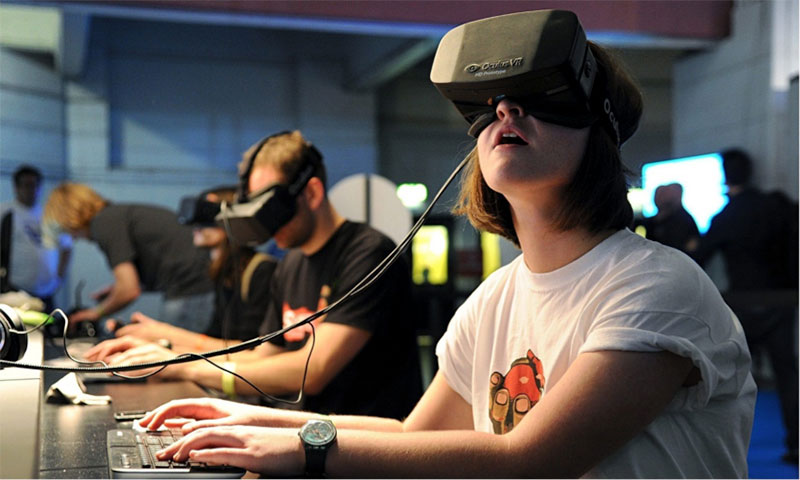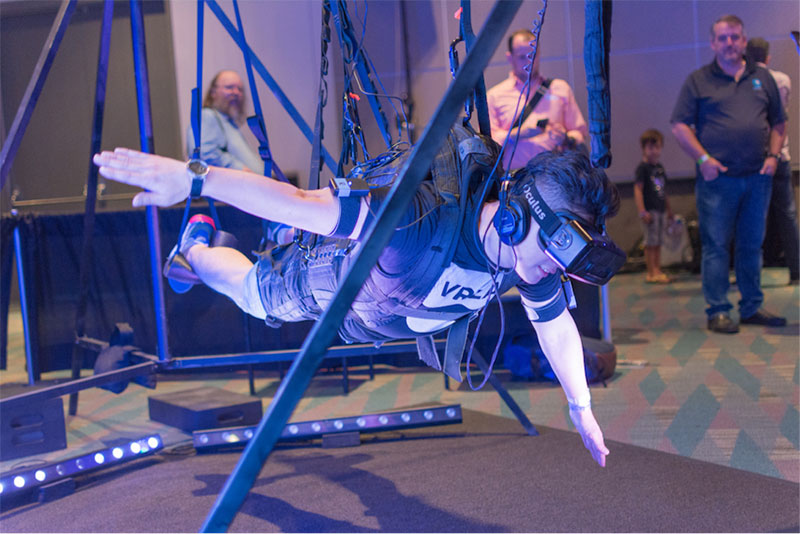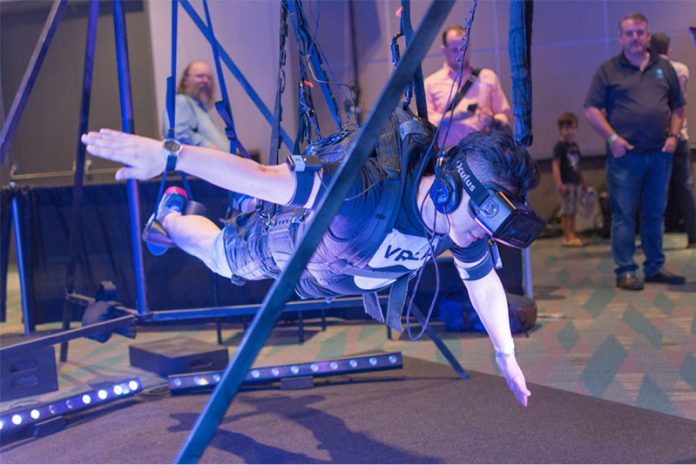By now, virtual reality (VR) has probably made it on to your radar screen in some way. Maybe you’ve only heard about it in bits and pieces, or maybe you’ve tried it yourself. Whatever the case, virtual reality feels like it could be the new generation of advanced technology.

Virtual Reality (VR) literally makes it possible to experience anything, anywhere, anytime
So – Virtual Reality, a definition
A realistic three-dimensional image or artificial environment that is created with a mixture of interactive hardware and software, and presented to the user in such a way that the any doubts are suspended and it is accepted as a real environment in which it is interacted with in a seemingly real or physical way.
Virtual reality is best understood by first defining what it aims to achieve – total immersion.

Total immersion means that the sensory experience feels so real, that we forget it is a virtual-artificial environment and begin to interact with it as we would naturally in the real world. In a virtual reality environment, a completely synthetic world may or may not mimic the properties of a real-world environment. This means that the virtual reality environment may simulate an everyday setting (e.g. walking around the streets of London), or may exceed the bounds of physical reality by creating a world in which the physical laws governing gravity, time and material properties no longer hold (e.g. shooting space aliens on a foreign gravity-less planet).
Key Elements of a Virtual Reality Experience
1. Virtual World
A virtual world is a three-dimensional environment that is often, but not necessarily, realized through one or more technologies, such as head sets, gloves etc where one can interact with others and create objects as part of that interaction. In a virtual world, visual perspectives are responsive to changes in movement and interactions mimic those experienced in the real world.
2. Immersion
Virtual reality immersion feeling physically present in a non-physical world. It encompasses the sense of presence, which is the point where the human brain believes that is somewhere it is really not, and is accomplished through purely mental and/or physical means. The state of total immersion exists when enough senses are activated to create the perception of being present in a non-physical world. Two common types of immersion include:
- Mental Immersion– A deep mental state of engagement, with suspension of disbelief that one is in a virtual environment.
- Physical Immersion– Exhibited physical engagement in a virtual environment, with suspension of disbelief that one is in a virtual environment.
3. Sensory Feedback
Virtual reality requires as many of our senses as possible to be simulated. These senses include vision, hearing, touch, and more, for example smell. Properly stimulating these sense requires sensory feedback, which is achieved through integrated hardware and software which include head mounted displays (HMD), special gloves or hand accessories, and hand controls.
4. Interactivity
The element of interaction is crucial for virtual reality experiences to provide users with enough comfort to naturally engage with the virtual environment. If the virtual environment responds to a user’s action in a natural manner, excitement and senses of immersion will remain. If the virtual environment cannot respond quickly enough, the human brain will quickly notice and the sense of immersion will diminish. Virtual environment responses to interaction can include the way a participant moves around or changes in their viewpoint; generally through movements of their head.
Most people relate to VR in terms of gaming, but in fact the scope for use is much wider. For example, it has already been demonstrated that a specialist surgeon in say London, can perform an operation on a patient anywhere in the world using VR and robots.
I guess a holo-deck as seen in Start Trek would be the ultimate VR experience …. And may be we aren’t that far off!










